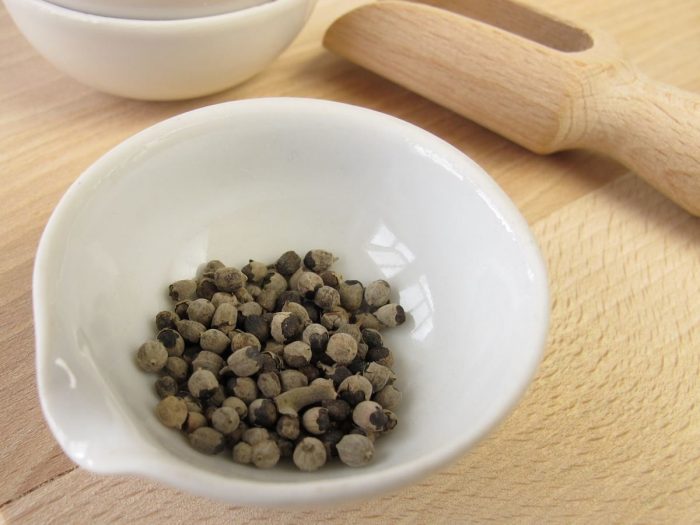Chasteberry has been used in traditional medicine for centuries, and while research is still limited, it appears to have certain important health benefits.
What is Chasteberry?
Chasteberry is the fruit of the chaste tree, which bears the scientific name Vitex agnus-castus. Other trees and plants in the Vitex genus are typically tropical in nature, but this species is also found in temperate areas. The tree and its berries have the name “chaste” because the fruit was long believed to be an aphrodisiac. The effects that this plant can have on the reproductive health of both men and women is largely why it remains in use to this day. [1]

Chasteberry has been used to address many hormone-related gynecologic conditions. Photo Credit: Shutterstock
While chasteberries are perhaps the most well-known part of the plant, the flowers, leaves, and tender shoots are also used in certain medicinal applications. Some of the active ingredients from these berries have been utilized in more formal medicine, specifically to regulate female hormonal health, but there is still some debate about the efficacy of this tree and its fruits. [2]
Chasteberry Benefits
There are many traditional benefits associated with chasteberry, including improving female fertility, reducing signs of acne, treating an enlarged prostate, and repelling insects, among others. However, if you are using these berries or their extract to treat a specific medical condition, it is wise to speak with your doctor about using this potent herb. [3]
- As a dietary supplement (capsule, tablet, powder, etc.), these berries can help minimize PMS symptoms, such as mood swings and cramps.
- If you suffer from menstrual pain, using these berries regularly can improve your symptoms over the long-term
- Reducing fibroids
- Boosting female fertility by balancing estrogen levels
- Easing tenderness in the breasts [4]
- Promoting lactation in the breasts
- Reducing inflammation in the prostate for men
- Treating migraines and lowering blood pressure
- Stimulating the libido
- Aiding in weight loss efforts
- Speeding the healing of bone fractures
- Repelling insects
- Lowering the risk of developing uterine fibroids
- Treating endometriosis
- Preventing amenorrhea
Chasteberry Uses
There are many different ways to use a chaste tree, as discussed below:
- Eating the berries directly from the tree
- Extracting the essential oils of the leaves and flowers
- An herbal remedy in the form of a tincture
- Dried tea made from the flowers
- As a highly concentrated powder [5]
Dosage
- Although there is some debate about the appropriate dose of chasteberry, most experts recommend taking 20 milligrams of a dry supplement three times a day, particularly if you are using it to balance your hormones.
- For a liquid extract, 30-40 drops each morning should be sufficient.
Regardless of why you are choosing to use this herbal remedy, it is best to speak with your doctor before beginning a new treatment.
Chasteberry Side Effects
Some of the common side effects of eating too many berries, or consuming too much of this supplement, include the following:
- Nausea
- Upset stomach
- Difficulty sleeping
- Weight gain
- Topical inflammation or rash
- If you are pregnant or breastfeeding, its effects on the reproductive system may be dangerous, so avoid use. [6]
- In some cases, it can cause a worsening of menstrual symptoms in women.
If you experience an allergic reaction, such as struggling to breathe or swelling on the face and neck, see a doctor immediately. Finally, if you are taking oral contraceptives, chasteberry can interfere with their effectiveness, so use this herb with caution!
